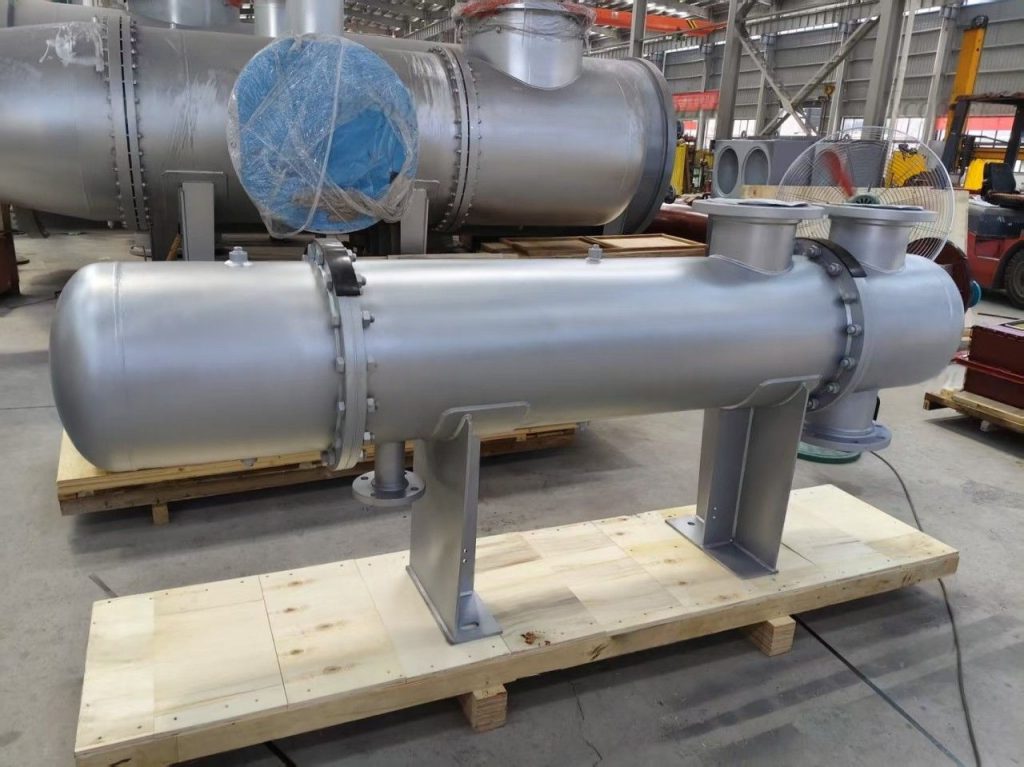When to Choose a Plate-Type Oil Cooler?
A plate-type oil cooler is ideal for applications prioritizing compact size, high efficiency, and clean fluids. Here’s when to consider one:
1. Space Constraints (Compact Design Needed)
◉ Why?
- 50–80% smaller than shell and tube coolers for the same capacity.
- Fits tight spaces (e.g., automotive transmissions, mobile equipment).
◉ Examples: - Electric vehicle battery/motor cooling.
- Construction machinery hydraulic systems.
2. High Efficiency (Rapid Heat Transfer)
◉ Why?
- 3–5x better heat transfer than shell and tube (due to large plate surface area).
- Ideal for low-viscosity oils (ISO VG 32–68).
◉ Examples: - Industrial hydraulic systems.
- Wind turbine gearboxes.
3. Clean, Low-Viscosity Oils
◉ Why?
- Narrow flow channels clog easily with sludge/debris.
Works best with filtered oils (contamination < 25 µm).
- ◉ Examples:
- Refrigeration compressors.
- CNC machine hydraulics.
4. Frequent Maintenance or Scalability
◉ Why?
- Gasketed plates allow easy disassembly for cleaning.
- Capacity can be adjusted by adding/removing plates.
◉ Examples: - Food processing (hygienic cleaning required).
- Pharmaceutical machinery.
5. Cost-Sensitive Projects
◉ Why?
- Lower upfront cost than shell and tube (less material).
- Energy-efficient (reduces operating costs).
◉ Examples: - Small industrial pumps.
- Automotive aftermarket upgrades.
When NOT to Use a Plate-Type Cooler?
◉ High-pressure systems (>300 psi) (except brazed/welded plate designs).
◉ Dirty or high-viscosity oils (e.g., gear oils, used engine oil).
◉ Corrosive/seawater cooling (unless titanium plates are used).
Plate-Type vs. Alternatives
| Scenario | Plate-Type | Shell and Tube | Air-Cooled |
| Compact Space Needed | ◉ Best | ◉ Poor | ◉ Good |
| High Efficiency | ◉ Best | ◉ Moderate | ◉ Low |
| Dirty Oil Handling | ◉ Poor | ◉ Best | ◉ Good |
| Pressure >300 psi | ◉ Limited | ◉ Best | ◉ No |
Plate-Type Subcategories
- Gasketed Plate – Serviceable, lower pressure (≤150 psi).
- Brazed Plate – No gaskets, handles higher pressure (≤600 psi).
- Welded Plate – For corrosive fluids (e.g., ammonia).
Final Decision Checklist
Choose a plate-type oil cooler if you need:
◉ Space-saving design.
◉ Maximized heat transfer (low-viscosity oils).
◉ Easy maintenance (gasketed).
◉ Cost efficiency.
For dirty oils, high pressure, or extreme temps, a shell and tube cooler is better.
Need help selecting? Share:
- Oil type (ISO grade/cleanliness).
- Flow rate & pressure.
- Temperature range.
- Space available.
